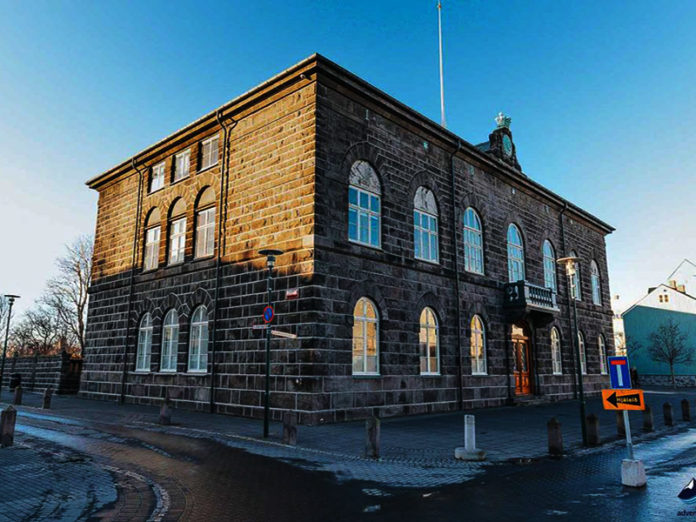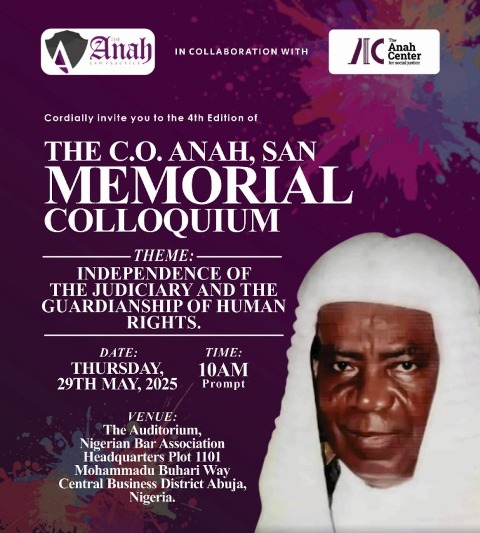By Mike Agunwa (NewsLeader Editor-at-Large)
AlThing parliament in Iceland is the first parliament in history. The parliament was created in the year 930, making it the world’s first legislative body.
The Althing was a general assembly of the Icelandic Commonwealth, where the country’s most powerful Leaders (goðar) met to decide on legislation and dispense justice. A goði was a local chieftain with specific legal and administrative responsibilities.
The parliament currently has a legislative capacity of 63 seats. The political groups that formed the coalition government in AlThing parliament is 34 and opposition parties is 29. They includes: Independent Party (16), Left Green Party (10) and the Progressive Party (8). The opposition Centre Party is (9), Social Democratic Alliance (7), Pirate Party (6), Reform Party (4), People’s Party (2) and Independent (1). The voting system is by Party-list Proportional representation. The last election was held on October 28, 2017, while the next election to the parliament will be held on or before October 23, 2021.
Three Icelanders were given credit for the founding of the AlThing in Iceland: Ulfljotr, Goat hair, and Thorsteinn Ingolfsson who was the son of the first settler in Iceland. A major feature of the Althing was the meeting of the legislative or law council, called the lögrétta. Only chieftains (Gothar) had the right to vote in the Lögrétta, and each brought two advisers into council meetings. When two or more shared a chieftaincy, only one at a time attended the lögrétta and performed the chieftain’s official duties at the Althing. The lögrétta was also empowered to grant exemptions from the law and make treaties with foreign countries.
The first AlThing was held at Thingvellir in the year 1180 Runic Era, and was believed to be a continuation of the Norwegian Thing presided over by Law Speaker, Thorleif the Wise. The judicial body that composed the first AlThing was the Gothar of Iceland who sent 36 of their number to form the first law body. The first order of business at the first Icelandic AlThing, was to choose a Law Speaker. Of special note was the first law passed, which prohibited warships from scaring the Land Spirits with their dragon head prows.
The Speaker of the AlThing, Steingrimur J. Sigfusson, literally the President of the Althing, is the presiding officer (speaker) of that legislature. For centuries, Iceland’s Alþing met every summer at Þingvellir (Assembly Plain), a magnificent rift valley shown to the left. This site is spectacular not only for its historical significance, but also for its beauty. It’s dotted with canyons, caves, rivers, springs, waterfalls, and lakes. The law-council (Lögretta) was the legislative body of the Alþing. The voting members were the goðar. They reviewed and amended existing laws, made new laws, and granted exemptions from the law. They also had the power to make treaties in the few cases that Iceland had dealings with foreign lands.
Iceland was divided into four administrative regions, called quarters (fjórðungar). Each quarter have nine chieftains, called goði (plural goðar). In the middle of the 10th century, three more goðar were added. The goði was the “first among equals”. The original goðar were probably the leaders of the ships carrying settlers to Iceland, and who claimed the land and divided it up among their followers. The goði is believed to have a special relationship with the gods, and he probably was responsible for the pagan religious rites for his followers.
After the conversion of Iceland to Christianity, the goðar maintained a special relationship with the new church, but his secular responsibilities remained intact. The office of goði (called the goðorð) was normally hereditary, but the goðorð could be transferred between individuals. The office of goðorð could be shared. However, only one goði from each goðorð could participate in the official business at the Alþing. The goðorð had no fixed boundaries. Allegiance to the goði from the people was voluntary. A person could chose to support any goði in his district and can change support from one goði to another with only minor formalities. The allegiance was a two way street: the goði looked after the interests of his men, and the men provided armed support to him in times of dispute.
The goðar met in regional þing in the spring, called várþing. Each várþing was presided over by three goðar, and all the supporters of each goði (called þingmenn) were required to attend. All goðar (thirty nine in number) attended each bing, accompanied by at least two advisors. Any other person could choose to attend, but only one supporter can each goði into the Alþing. Þingmenn who could not attend were required to pay a tax to the goði. These funds helped offset travel expenses for those who did attend. In order to be legally fit to attend the þing, a man must be able to ride a full-day’s journey, and bring in his own hobbled horse after baiting, and find his way by himself. Three legal functions were performed at the Alþing: the laws were recited by the law speaker; the laws were made by the law council; and the laws were judged by the quarter courts.
In the years before a written culture developed in Iceland, the law-speaker literally spoke the law, reciting out loud one third of the laws at each annual meeting of the Alþing. Thus, over the course of his three year term, the law speaker would have recited the entire law code. The written law code (Grágás) contains oaths and other formulae composed with rhythmic elements and alliterative patterns, making the laws easier to remember when the laws existed only in oral form. The law speaker was the only official who received a regular payment.
The lawspeaker stands on the Lögberg (in the center of the sketch) and recites the laws, while goðar and other interested parties listen. In the foreground are booths (búðir), temporary stone structures covered with a tent-like tarp that served as both dwellings and meeting places while the Alþing was in session. The law speaker could exert influence, but did not “rule” the country. The power remained in the hands of the goðar. The law speaker was the repository of legal knowledge in the era before the laws were written down. He was consulted on any disputed points of law.
Even after Iceland’s union with Norway in 1262, the Althing still held its sessions at Þingvellir until 1799, when it was discontinued for 45 years. It was restored in 1844 and moved to Reykjavík, where it has resided ever since. The present parliament building, the Alþingishús, was built in 1881, of hewn Icelandic stone.
From the time that the Alþing was established until Christianity was adopted, Iceland was completely pagan. Icelandic law and the heathen religion were tightly connected during this time, as evidenced by the fact that the leaders of the religion and the leaders of the government were one and the same. It’s worth pointing out that the swearing of these oaths probably precluded Christians from participating in court cases until Iceland adopted Christianity in the year 1000
After losing its independence in the 13th century, Iceland eventually won back its autonomy, and the modern Alþingi moved into this current basalt building in 1881; a stylish glass-and-stone annex was completed in 2002. Visitors were allowed to attend sessions (four times weekly October to May) when parliament is sitting.
The Alþing provided the judicial functions through the Quarter Courts and the legislative functions through the Law Council. But no executive functions were provided. Once the court had decided that someone was guilty of breaking the law, the Alþing had no power to execute a sentence. That was up to the injured party, or his or her family or supporters. In addition to the participants in politics and law, the Alþing attracted all sorts of merchants, craftsmen, and peddlers. The annual meeting was the time for marriages to be arranged, alliances to be made, broken friendships to be renewed, gossip and news exchanged. Perhaps one thousand people routinely attended the Alþing, although many more attended important or contentious sessions. Despite the sparseness of the Icelandic population, the Alþing made it possible for Icelanders to know one another to a greater degree and to meet each other more often than any other European country of this time.
As from 1881, Iceland began to practices representative democracy, a principle which holds that power originates with the people who delegate this power to their elected representatives. Every four year, the electors choose, by secret ballot, 63 representatives to sit in parliament. These members of parliament jointly hold legislative powers, and also have fiscal powers, i.e. the power to make decisions on public spending and taxation.
The constitution of Iceland provides for six electoral constituencies with the possibility of an increase to seven. The constituency boundaries are fixed by legislation. Each constituency elects nine members. In addition, each party is allocated seats based on its proportion of the overall national vote in order that the number of members in parliament for each political party should be more or less proportional to its overall electoral support. A party must have won at least five per cent of the national vote in order to be eligible for these proportionally distributed seats. Political participation in Iceland is very high.
Over 80 per cent of the electorate casts a ballot (81.4% in 2013). The current speaker of the Althing parliament is Steingrimur J. Sigfusson, from the Left Green Party. He was elected Speaker since December 14, 2017. NNL. (nigeriannewsleader)






Awesome
https://dirtybubblemedia.substack.com
Thanks
https://dirtybubblemedia.substack.com
Another good post
https://dirtybubblemedia.substack.com/p/who-spends-24-million-on-an-nft-meet
Loved every word
https://dirtybubblemedia.substack.com/p/who-spends-24-million-on-an-nft-meet
Good post as usual
https://dirtybubblemedia.substack.com/p/who-spends-24-million-on-an-nft-meet
Enjoyed every sentence
https://dirtybubblemedia.substack.com/p/who-spends-24-million-on-an-nft-meet
Enjoyed the read
https://dirtybubblemedia.substack.com/p/who-spends-24-million-on-an-nft-meet